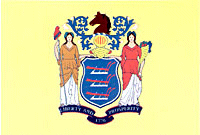
Name: Noel Luis Rios
Rank/Branch: E5/US Air Force
Unit: 15th Aerial Port Squadron
Date of Birth: 03 April 1941
Home City of Record: Newark NJ
Date of Loss: 06 March 1968
Country of Loss: South Vietnam
Loss Coordinates: 163659N 1064559E (XD933404)
Status (in 1973): Killed/Body Not Recovered
Category: 4
Acft/Vehicle/Ground: C123K
Other Personnel in Incident:
William F. Anselmo (missing)
Source:
Compiled by Homecoming II Project 15 March 1991 from one or more of the
following: raw data from U.S. Government agency sources, correspondence with
POW/MIA families, published sources, interviews. Copyright 1991 Homecoming II
Project.
REMARKS:
SYNOPSIS:
The Fairchild C123 "Provider" was a night attack system/transport
aircraft based on an all-metal glider designed by Chase Aircraft. The airplane's
C123B prototype first flew on September 1, 1954. The C123B, in the hands of a
group of airmen who called themselves "The Mule Train" became the first
transport to see Vietnam service.
The Provider, particularly in camouflage paint with mottled topside and light bottomside, resembled an arched-back whale suspended from the bottom midpoint of huge dorsal wings. Like other transports, the Provider proved its versatility during the Vietnam war.
On March 6, 1968, a C123K departed Da Nang on an administrative flight to deliver aircraft parts to Khe Sahn. Sergeants Noel L. Rios and William F. Anselmo were to fly on one aircraft, but this aircraft was grounded for mechanical problems, and the two boarded another bound for Khe Sanh.
Near Khe Sahn, the C123K was struck by hostile fire and crashed. According to the Air Force, there were no survivors. Rios and Anselmo remain unaccounted for, while the rest of the crew was apparently recovered.
Rios and Anselmo are listed among the missing because their remains were never found. Others who are missing do not have such clear-cut cases. Some were known captives; some were photographed as they were led by their guards. Some were in radio contact with search teams, while others simply disappeared.
Since the war ended, over 250,000 interviews have been conducted with those who claim to know about Americans still alive in Southeast Asia, and several million documents have been studied. U.S. Government experts cannot seem to agree whether Americans are there alive or not. Detractors say it would be far too politically difficult to bring the men they believe to be alive home, and the U.S. is content to negotiate for remains.
Well over 1000 first-hand, eye-witness reports of American prisoners still alive in Southeast Asia have been received by 1990. Most of them are still classified. If, as the U.S. seems to believe, the men are all dead, why the secrecy after so many years? If the men are alive, why are they not home?